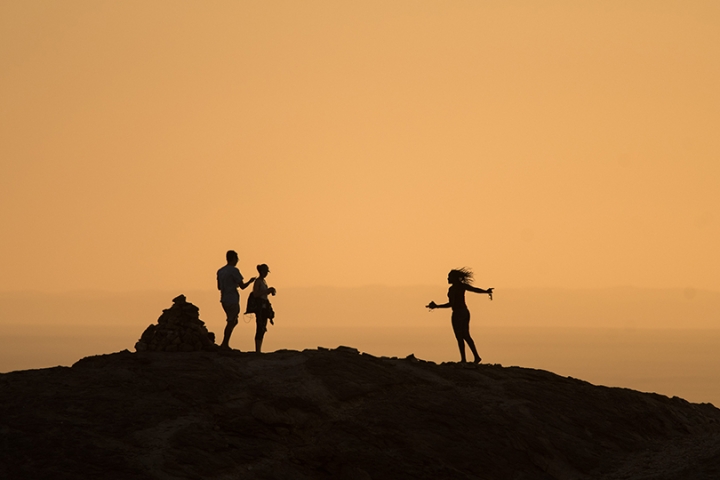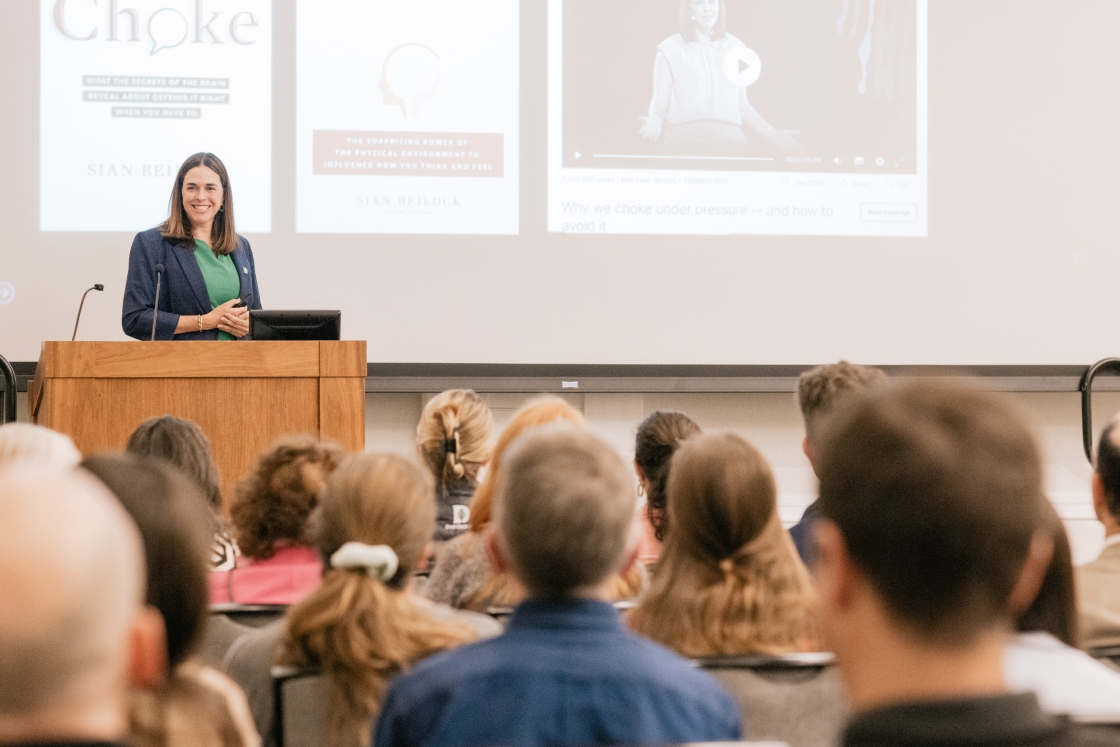As part of the environmental studies foreign studies program, Dartmouth undergraduates visit the Namib Desert of Namibia and get an opportunity to conduct original research on social-ecological systems and conservation issues involving the local Topnaar people, the economic importance and ecology of the !nara melon, and the ecology of this desert environment.
For two weeks at the end of the FSP in southern Africa, through a collaboration with the internationally and Namibian-government supported Gobabeb Research and Training Centre, the students live and work in one of the world’s most unusual ecosystems.
“It is one of the most beautiful places I’ve ever been,” says Jeff Kerby, a postdoctoral fellow with the Neukom Institute for Computational Science. Kerby supports the undergraduates’ Namibia research with drones and other analytic-imaging technology.
That assessment of the desert landscape means a lot coming from Kerby, a Dartmouth postdoc in environmental studies and biology and National Geographic photographer whose work ranges from photographing the gelada monkeys of the highlands of Ethiopia to using computer models and drones to quantify changing plant communities in Siberia, Canada, and Greenland.
In addition to bringing new drone technology and analytical help to the students doing research in Namibia over October and November last year, Kerby compiled these photos documenting the FSP experience in the Namib Desert:
Photos by Jeff Kerby
Overlooking the Gobabeb Research and Training Centre on the edge of the Namib Desert
From the high dunes at the edge of the Namib Desert, the Gobabeb Research and Training Centre is visible beside the dry bed of the Kuiseb River.
Pod production assessment
Mackenzie Scurka ’19 estimates tree pod production to get an idea of how much food these trees produce (in the form of edible pods). Her group is investigating how much livestock the dry riverbed can support, and the impact on conservation challenges in this area.
A sudden storm over the Namib
A lightning bolt strikes the gravel plain next to the Gobabeb Desert Research and Training Facility during a rare rainstorm in the Namib Desert.
Long-term plant monitoring after the desert rain
After the rain, Alexander Cotnoir ’19, Amelia Ali ’19, and Ned Darling ’19, and Gobabeb researcher Saima Shikesho return from their !nara plant monitoring project in the dunes.
Students take a break from livestock monitoring project
From left, Mackenzie Scurka ’19 (in the driver’s seat), Erin McCarthy-Keeler ’19, Nick Cervenka ’19, and Eric Gokee ’19 take a break in the surveying truck in the dry bed of the Kuiseb River, which splits the Namib dune sea from the nearby gravel plain. They traversed dozens of miles of riverbed, taking a census of livestock as part of their research project studying the interface of the region’s social and ecological systems.
Examining desert insects at night
Alexander Cotnoir ’19 examines an insect at a light trap set up by Dartmouth graduate student Liz Studer in the dry Kuiseb River bed near the group’s basecamp at Gobabeb Research and Training Centre in Namibia.
Students catch the Namibian sunset over the Namib-Naukluft gravel plain
Dartmouth and Namibian students watch the sun set over the gravel plain of Namib-Naukluft National Park.
Preparing project materials for !nara plant monitoring
Alexander Cotnoir ’19, left, and Ned Darling ’19 go over project materials in the shade of a truck bed during their final project studying the leafless desert !nara plant in the Namib Desert as Saima Shikesho, a staff member at the Gobabeb Research Training Centre, approaches in the background.
Bringing tech to the field
Brandon Holmes ’19, Solomon Bang ’19, Nick Cervenka ’19, and Yolanda Huerta ’19 take turns manning the plant-monitoring drone at the Gobabeb Research and Training Centre on the edge of the Namib Desert. For their final projects, some students used data from this drone to take non-invasive measurements of desert plants.
The Namib Desert at dawn
The Namib Desert begins to warm up as the sun peeks over the cloudy horizon.
A break from desert fieldwork
Amelia Ali ’19, right (light blue T-shirt), coordinates with the rest of her team on fieldwork plans in the shade of a tree on the edge of the Namib Desert.
Dartmouth Students study rare desert welwitschia plants
From left, Mackenzie Scurka ’19 (hands outstretched), Catherine Rocchi ’19, Alexander Cotnoir ’19, Nick Cervenka ’19, Erin McCarthy-Keeler ’19, and Amelia Ali ’19 walk up a dusty drainage in Namib-Naukluft National Park. Here they had a chance to the see the rare welwitschia plant, left, which grows only in Namibia and Angola.
Night
A lone tree in the Namib Desert at night.
The view from above
Neukom Fellow Jeff Kerby walks between monitoring plots in the Namib Desert as the FSP drone flies overhead.
The Namibia research project is one segment of the environmental studies FSP to southern Africa, which also includes projects related to the interactions of humans and the environment in South Africa. For more information about the FSP, which is offered in the fall term, contact Professor Douglas Bolger, FSP director.

